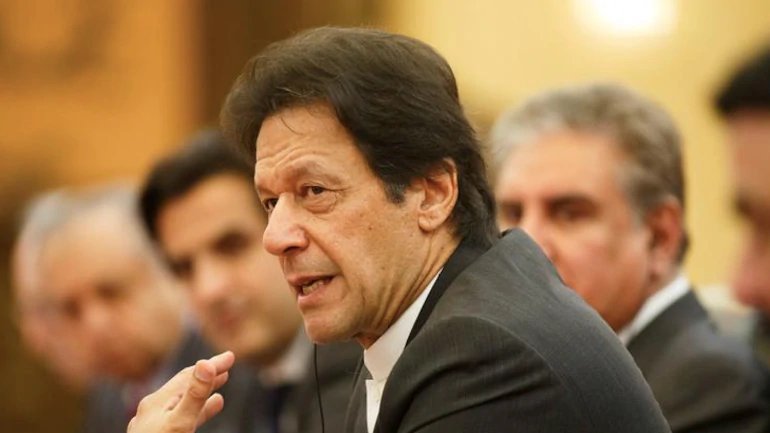
SOURCE: INDIA TODAY
Pakistan Prime Minister Imran Khan’s Pakistan Tehreek-i-Insaf (PTI) has claimed victory in the legislative assembly election in Gilgit-Baltistan held on Sunday. This result is in line with the tradition that a party ruling in Islamabad claims victory in Gilgit-Baltistan.
What sets Imran Khan-led PTI’s victory apart is that it has come at a time when Pakistan is nearing its plan to permanently alter the status of Gilgit-Baltistan. India has slammed Pakistan saying any action to alter the status of Gilgit-Baltistan by Islamabad has no legal basis.
Pakistan captured the Gilgit-Baltistan region in 1947 through invasion and military treachery of British commanders. It is now governed by the Gilgit-Baltistan Empowerment and Self-Governance Order of 2009 issued by Pakistan’s federal government.
What held Pakistan from making the move earlier?
This Order established an electoral framework and granted limited autonomy to the region. The current election has been held at a time when Pakistan is moving towards declaring Gilgit-Baltistan as its fifth province. The announcement was made by the Imran Khan government in September this year.
Pakistan has been in control of Gilgit Baltistan, marking it separate from the other part of the erstwhile princely state of Jammu and Kashmir, which it invaded in October 1947. This position helped Pakistan build a narrative showing India as an aggressor in Jammu and Kashmir, and invoke its stand in the UN on the Kashmir issue.
Additionally, since the constitution of Pakistan does not recognise Gilgit-Baltistan (officially, part of the Union Territory of Ladakh now) and the rest of Pakistan-occupied Kashmir, as its own territory, it gives Pakistan the latitude to ignore the need for development, care for human rights and use the area as its ground for terror-strategies.
Since the days of General Zia-ul Haq, the former Pakistan dictator, the government has tried to change the demography by settling Sunni Muslims in Gilgit-Baltistan, whose original demography had overwhelming majority of the Shias.
This is the same experiment that China carried out in Xinjiang, bordering with Gilgit-Baltistan. China brought in ethnic Han people to settle in the region which was dominated by Uyghur Muslims. Both acted in order to make their claim of local support look robust.
Gilgit-Baltistan, a Chinese design
It is widely believed that Pakistan’s Imran Khan government is acting under the pressure from China in inching towards granting the status of the fifth province to Gilgit-Baltistan. China has made a massive investment (around $60 billion) in the China Pakistan Economic Corridor (CPEC) that passes through this region. The CPEC gives China direct access to the Indian Ocean with an outlet at Gwadar, the port city in restive Balochistan province of Pakistan.
Pakistan has further promised to help China set up a Special Economic Zone at Moqpondass in Gilgit-Baltisitan. The growing Chinese influence in Gilgit-Baltistan has also led to protests from the locals. Some measures taken by Pakistan such as introduction of Mandarin in the schools of Gilgit-Baltistan has seen wholesome resistance. This move also indicates that China is seeing Gilgit-Baltistan as its future colony in Pakistan.
The China-Pakistan collaboration in Gilgit-Baltistan has serious implication for India’s security concerns. Pakistan had gifted strategically important Saksgam Valley in the northeast of Gilgit-Baltistan to China in exchange for peace in 1960s. China has illegally occupied Aksai Chin in the north-eastern part of Ladakh Union Territory. It is trying to alter the ground position along the Line of Actual Control (LAC) in eastern Ladakh.
The Gilgit-Baltistan move by Pakistan appears to be a Chinese design to permanently de-link the region – which according to the Instrument of Accession, upheld even by the UN – from the Kashmir issue. The region belongs to India according to the merger agreement between the erstwhile ruler of the princely state of Jammu and Kashmir, and the Indian government in 1947.
Why now?
In the current make-up, China lacks legal sanctity in operating from Gilgit-Baltistan, which is not a legal part of Pakistan. China for long had an impression that India might never press for the region lost during 1940s and 1950s.
That impression changed with revoking of Article 370 in Jammu and Kashmir, and bifurcation of it into two Union Territories by the Narendra Modi government in 2019.
This explains why China is aggressive on eastern Ladakh front and pressurising Pakistan to alter the status of western part (under Pakistan’s occupation) of Ladakh. And, this is why the Imran Khan government suddenly announced in September the inclusion of Gilgit-Baltistan as the fifth province of Pakistan.






